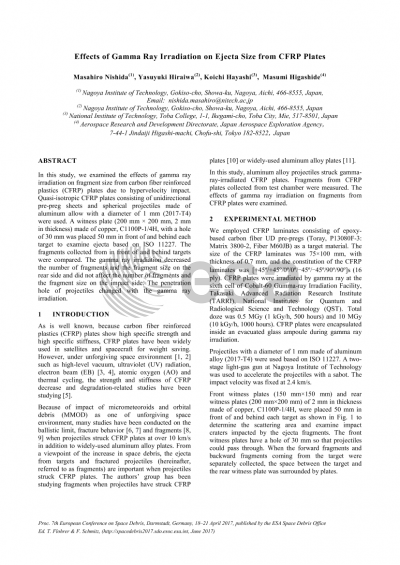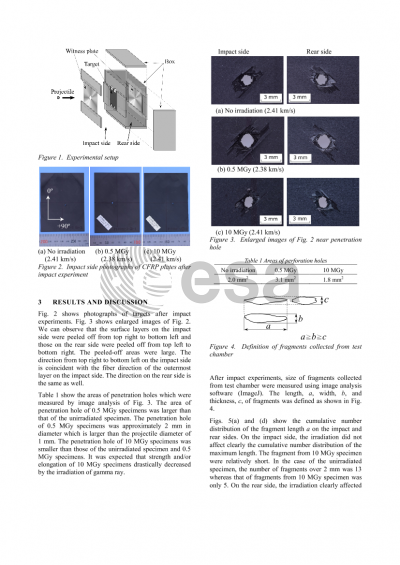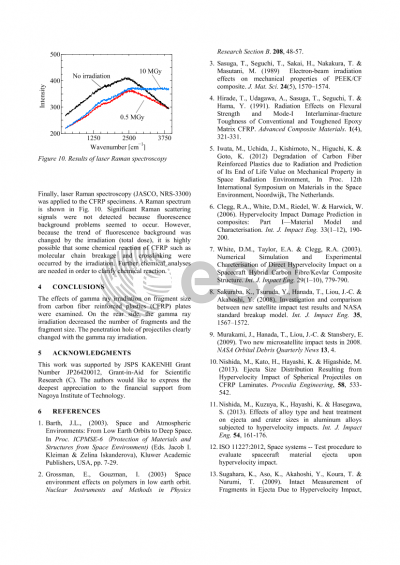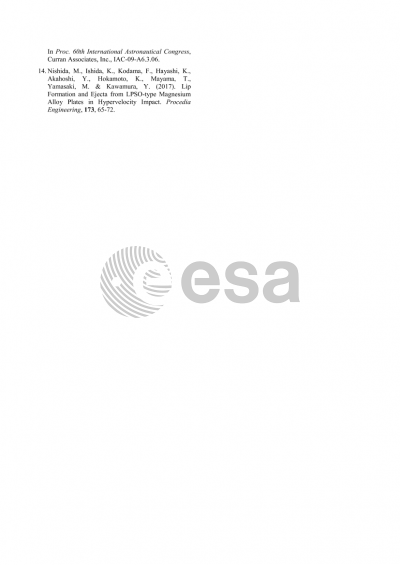Document details

Abstract
The usage of carbon fiber reinforced plastics (CFRP) plates in satellites has been increasing as of late. Because micrometeoroids and orbital debris (MMOD) often strikes spacecraft, satellites, and space stations, several studies have been conducted on the ballistic limit, fracture behavior and size distribution of ejected materials when projectiles have perforated the CFRP plates. However, the size distribution and mass distribution of generated fragments and ejected materials have not yet been fully elucidated. The authors’ group has been studying fracture behavior and size distribution of ejecta from CFRP plates. Recently, the effects of space environment are becoming more important: atomic oxygen (AO), ultraviolet ray (UV), radial ray (electron beam: EB and gamma ray), vacuum (outgas and desorption of moisture). In particular, radial ray will affect mechanical properties of materials.
In this study, we examined the effects of gamma ray irradiation on ejecta size from CFRP plates due to hypervelocity impact. CFRP plates were irradiated by gamma ray at Takasaki Advanced Radiation Research Institute (TARRI, JAEA). Total doze was 0.5 to 10 MGy. We used quasi-isotropic CFRP plates using unidirectional pre-preg sheets. Spherical projectiles made of aluminum allow and having a diameter of 1 mm (2017-T4) were used. Projectiles were accelerated using a two-stage, light-gas gun at Japan Aerospace Exploration Agency (JAXA) and Nagoya Institute of Technology with a sabot. A witness plate (200 mm × 200 mm, 2 mm in thickness) made of copper, C1100P-1/4H, with a hole of 30 mm was placed 50 mm in front of and behind each target to examine ejecta based on ISO 11227. The ejecta collected from in front of and behind targets were compared. The gamma ray irradiation decreased the number of ejecta and the ejecta size. The penetration hole of projectiles decreased with the gamma ray irradiation. The number of ejecta in front of targets was increased with impact velocity.
Preview







